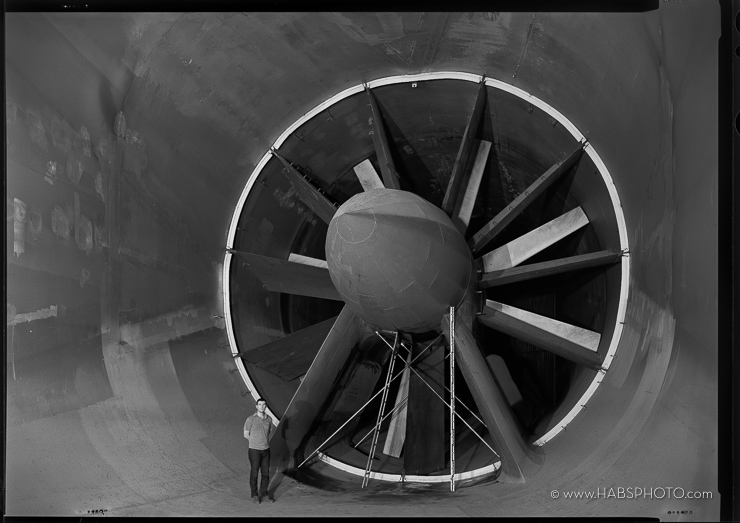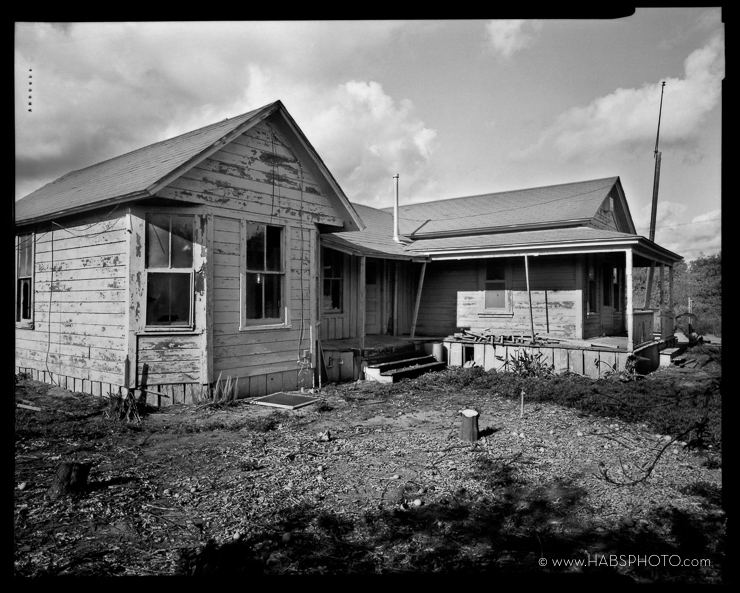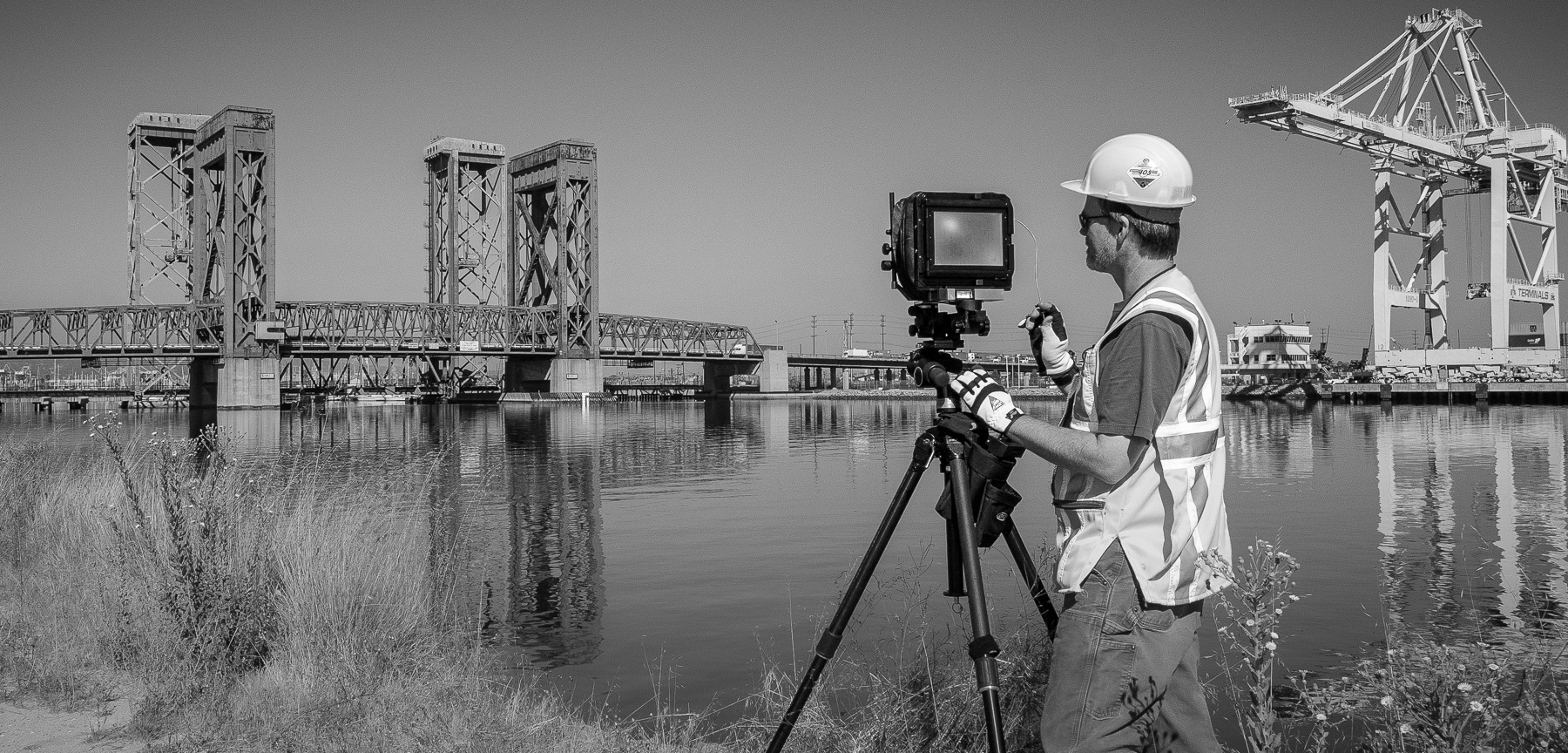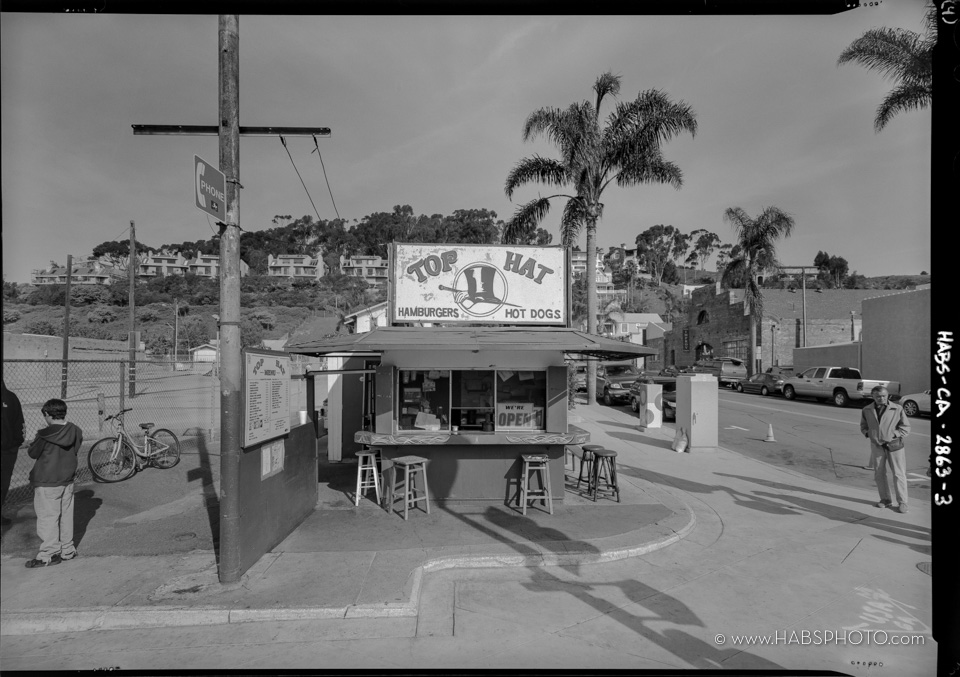HABS Mitigations Explained

Making CEQA Mitigations Less Expensive (and more meaningful).
SPEED READ:
• CEQA Mitigations can be a more valuable public benefit if single copies are created to HABS/HAER/HALS guidelines and then donated to Heritage Documentation Programs; costing less and mitigating more.
• Most photographic mitigations in California already meet all the required HABS submittal guidelines.
• Documents donated to HABS/HAER/HALS are only reviewed for format and quality.
STEPHEN SCHAFER | DOCUMENTING OUR INHERITED ENVIRONMENT
The three programs administered by the Heritage Documentation Programs (HDP) department of the National Park Service (NPS), called the Historic American Buildings Survey (HABS), the Historic American Engineering Record (HAER), and the Historic American Landscapes Survey (HALS), are the gold-standard of documentation policies.
HABS and its companion programs are more than sets of rules for making drawings, and taking pictures, they involve a systematic program beginning with initial field recording and resulting in perpetual preservation and dissemination at the Library of Congress. HABS, HAER and HALS serve as an archive for the things that we find significant and valuable but that can't be collected or exhibited. Unlike our precious National Parks, National Landmarks, house museums and historic sites – many, if not a majority, of the 45,000 places documented by HABS, HAER and HALS no longer exist or have been altered extensively. HABS serves as America's Museum of Buildings, Construction and Architecture, HAER serves as the American Museum of Built Technology and Engineering Innovation, and HALS could be described as our Museum of Significant Cultural Sites; together they are THE American Memory of Places.
The data created for HABS/HAER/HALS (3H) must be transferred into the public domain and requires a Life Expectancy of over 500 years (LE500). This is accomplished by keeping the photographic negatives in “state-of-the-art curatorial facilities” at Fort Meade in Maryland which are humidity and temperature controlled. After donation to HABS, the data is passed on to the Library of Congress (LoC) Prints & Photographs Division which carries out text-scanning of all the documents, scanning of the drawings and high-resolution photo scanning of the original film negatives. Then the documentations are uploaded to the LoC website where they amplify that "quality data" to "public benefit." All the keyword-searchable data, digital Jpegs and high resolution Tiff files of the drawings and photographs are broadcast on the Library of Congress website and this American treasure is made available on the Internet for public download 24/7/365, worldwide.
"THE DATA CREATED FOR HABS/HAER/HALS
REQUIRES A LIFE EXPECTANCY OF OVER 500 YEARS …
CAN YOUR LOCAL HISTORICAL SOCIETY MATCH THAT?"
REQUIRES A LIFE EXPECTANCY OF OVER 500 YEARS …
CAN YOUR LOCAL HISTORICAL SOCIETY MATCH THAT?"
Documentation is one way to mitigate impacts to significant historic resources adversely impacted by climate change, hazards or development, and 3H documentation is one facet of a comprehensive CEQA mitigation strategy. There are many ways to document resources with digital photography, video, illustration, virtual reality, laser-scanning, drone photography and technologies that haven’t even been invented yet. While innovative documentation activities should be used to add to a basic documentation mitigations, only documentation following the HABS/HAER/HALS guidelines meets the Secretary of the Interior’s Guidelines for Architectural and Engineering Documentation (SIG); because it follows three core requirements:
• Photography & measurements to capture maximum data.
• Archival document production on reproducible, archival materials.
• Perpetual storage & perpetual public access.
Not just one or two of these basic tenets are required, but all three. After donation to LoC, the archival film, drawings and reports are placed in state-of-the-art cold storage and the data is made available on the LoC website. While it may appear that doing a partial HABS, HABS-Like, Digital-HABS or Modified-HABS documentation using digital photography and/or distributing the records locally would be sufficient, in order for the mitigation to be a public benefit for future generations and meet the SIG, the entire HABS procedure must be followed.
"THE ACT OF DOCUMENTATION ITSELF
DOES NOT HAVE A MITIGATING EFFECT"

What happens in Ventura, Stays in Ventura... here's a sad story. In 2003, I photographed Thille Ranch in my home town of Ventura, California (above), as a HABS-Like CEQA mitigation for a demolition project. Today it's unfindable. Even though I live here, and I took the photos and I know what to ask for, I wouldn't know where to start looking. Chances are the negatives and prints all ended up in the city planning department's off-site storage in a musty cargo-container full of file boxes. The majority of the documentations that I get paid thousands of dollars to produce, and that are meant to be a public benefit, are all virtually UNFINDABLE. Yet the ones I produce for HABS/HAER/HALS transmittal are all at my fingertips (and yours), and will be for my lifetime and many more.
Unless you are a professional researcher with inside knowledge of what specific data to request at a specific local historical museum, or you have access to exclusive archives like the Huntington Library or military archives, you will NEVER find some of the HABS-Like records photographers, historians and architects in California have compliled and delivered to local archives over the last 30+ years. Even then, small historical societies may not even know they have old HABS-Like documents in their file cabinets. A HAER-like of the largest lift-span bridge on the West Coast? A HALS-lite of a modernist reservoir roof by a significant landscape architect? A HABS-like of an innovative 1929 Jail in San Francisco? A HAER-style 5x7 photo survey of a 7'x10' wind tunnel at NASA Ames Research? Power plants, pump houses, and printing presses – nope. Churches, cranes, canals, canneries and colleges – nada. These valuable documents are all squirreled away for no mere mortal to find. Not much public benefit there. And the worst part … every single one of those documentations required the same quality and effort (and cost) as a donation to the HDP/Library of Congress; some took even more effort and much more cost. Every. Single. One.
Better is Cheaper: Counterintuitively, making a single copy of a HABS/HAER/HALS documentation and donating it to Heritage Documentation Programs for archiving at the Library of Congress in Washington, D.C. through the informal donation procedure is less expensive than distributing multiple archival copies locally. Note that the "3H donation" procedure to HDP is different than the federal mitigation review procedure for Section 106 undertakings administered by the NPS Regional Offices (more on that later).
If a lead agency oversees mitigations for a historic resource under a state, local or CEQA requirement, then the mitigation should actually result in a public benefit when completed. The act of documentation itself does not have a mitigating effect on the resource. The data recorded, archived, and distributed to the public in perpetuity is the mitigating action; the more widespread and long term the data distribution, the more meaningful the mitigation.
Storage is not Accessibility. It's the three tenets, 1. Maximum Data Documentation 2. Archival Data 3. Perpetual Accessibility, that make a HABS/HAER/HALS survey work. Most local documentations usually only fail on number 3: Accessibility. In our experience, CEQA mitigations usually require large format photography and measured drawings that "follow HABS/HAER/HALS guidelines," expressly requiring large format film photographs by an experienced photographer, measured drawings by an experienced architect, and reports by a qualified historian. These mitigations often go on to require document production on archival materials "to HABS/HAER/HALS standards." Then things go haywire, in an attempt to avoid the perceived hassle of the getting the data into the Library of Congress, local mitigations often spell out a multitude of local historical societies, libraries, archives, info centers and museums that will receive expensive copies of negatives, drawings, reports and archival prints. This local afterthought can be the costliest, yet ironically it also reduces the public benefit of the mitigation. All of the "HABS-Like" large format documentations we produce in California as CEQA mitigations could be repackaged and mailed to HDP in Washington, D.C. with little extra effort on our part. These locally-stored documentations stay local, aren't scanned, aren't keyword-searchable, aren't shared on any website, don't show up on Google-search, and might get stored in the special library "reference section" nobody ever goes into. An excess of expense and care for something that benefits few if anyone and doesn't meet the Secretary of the Interior's Standards; two out of three is close, but no cigar.


Prints for the planning department, local historical conservancies and landmarks commissioners can be produced as acid-free paper laser prints from a color copier for less than $1.00 each and regular 11x17" paper plans can be printed for a fraction of full-sized HABS archival vellum drawings. Once the prints, negatives, drawings and the report are donated to HDP and LoC, there is no need for the city or local groups to store, protect, insure or backup the data from a HABS survey. The high resolution photographic and drawing files alone take up hundreds of megabytes of space and creating a website to disseminate those images would perpetually need costly updating, maintenance, and a backup strategy in case of server crashes or viruses. The negatives need to be kept cool and dry and the prints should be available to historians, students and the public. Most local libraries and museums lack the ability to archivally store film negatives for even a generation, and definitely can't compete with Library of Congress life expectancy of over 500 years. If a local citizen or a historian in Guam wants to access the high resolution files, just type the a keyword into the LoC HABS search page and voila, instant access – anywhere.
IN THE END,
WHY NOT LET THE LIBRARY OF CONGRESS DEAL WITH IT
FOR THE NEXT TWENTY-PLUS GENERATIONS?
WHY NOT LET THE LIBRARY OF CONGRESS DEAL WITH IT
FOR THE NEXT TWENTY-PLUS GENERATIONS?
What's Stopping You? (Maybe NPS review) We want to dispel a couple of myths that have perpetuated in the mitigation world.
Myth #1: NPS Heritage Documentation Programs is only interested in National Historic Landmarks and properties on the National Register of Historic Places.
In all probability, Heritage Documentation Programs wants your local historic records; if they're historic/significant 3H wants it, even if it's local. From the beginning the HABS mandate was to document "A complete resume of the builders' art." The early guidelines intended HABS record "Structures of all types, from the smallest utilitarian structures to the largest and most monumental." This myth that only nationally historic sites are eligible did have a basis in fact: A 1997 memo was circulated by the ACHP that stated that federal documentation will only be carried out on National Historic Landmarks and nationally significant sites to the detriment of the HABS/HAER collections, but a 2017 memo has superseded that limiting policy with a more inclusive policy that federal documentations will include ALL historic properties. HDP has also been very keen on accepting documentations of resources that are not on the National Register but have local historic significance, buildings as small as a hot dog stand (HABS-CA-2863 below) that are not on the National Register.

Myth #2: HABS/HAER/HALS "donations" are reviewed by SHPO/NPS for content and adequacy.
Donations to Heritage Documentation Programs are not reviewed by the same NPS entity as required federal mitigations. For Section 106 mitigations, HABS documentations must be initially guided in their scope and content by consulting the NPS Regional Office reviewers and potentially also the SHPO to assure adequacy of mitigations. After the recording takes place, the working drafts are again sent to NPS Regional to determine if everything is adequate, and recommend changes, edits, and sometimes even redos. In contrast, donating records to HDP involves a phone call with the HDP collections manager in Washington DC to discuss the significance of the site and the most appropriate of the three documentation programs (HABS, HAER or HALS) to use to record the site. HDP is concerned that the donated materials follow the 3H quality guidelines and they will be the point of contact to assign the official 3H number to the documentation. Our experience is that most CEQA documentations meet HABS/HAER/HALS formatting and archival standards, and HDP will often accept them into the formal LoC collection as-is (with appropriate numbers). And did we mention it's free?
Myth #3: HABS/HAER/HALS documentation needs to be undertaken with "official" involvement.
Heritage Documentation Programs will accept direct donations from anyone willing to follow the Secretary of the Interior's Standards*. This can be done by photographers, historians, or developers trying to get a jump on documentation mitigations that will be required on future projects. Since there is no better documentation program than HABS/HAER/HALS, having an architectural historian develop a thorough scope and write a report, with measured drawings and large format photographs, can save time, and time is money. A donation may amount to just a few drawings or photos of a historic site mailed to NPS in D.C. directly.
The best time to document a historic resource was right after it was built, the second best time is today; waiting for a "more convenient time" sometime in the unknown future after the building is boarded up can create delays. If documentation becomes a condition of approval or a monitored CEQA mitigation that needs to be signed off by multiple parties, everything takes longer and costs more and will not necessarily produce better results, just more emails and bigger headaches. We have done a number of HABS donations where "getting-it-over-with" was our client's main goal, but they saved time and money and we created a better documentation with more public benefit to boot. Win-Win.
The best time to document a historic resource was right after it was built, the second best time is today; waiting for a "more convenient time" sometime in the unknown future after the building is boarded up can create delays. If documentation becomes a condition of approval or a monitored CEQA mitigation that needs to be signed off by multiple parties, everything takes longer and costs more and will not necessarily produce better results, just more emails and bigger headaches. We have done a number of HABS donations where "getting-it-over-with" was our client's main goal, but they saved time and money and we created a better documentation with more public benefit to boot. Win-Win.
*Preparing HABS/HAER/HALS Transmittal Guidelines available at: nps.gov guidelines
www.HABSPHOTO.com | DOCUMENTING OUR INHERITED ENVIRONMENT